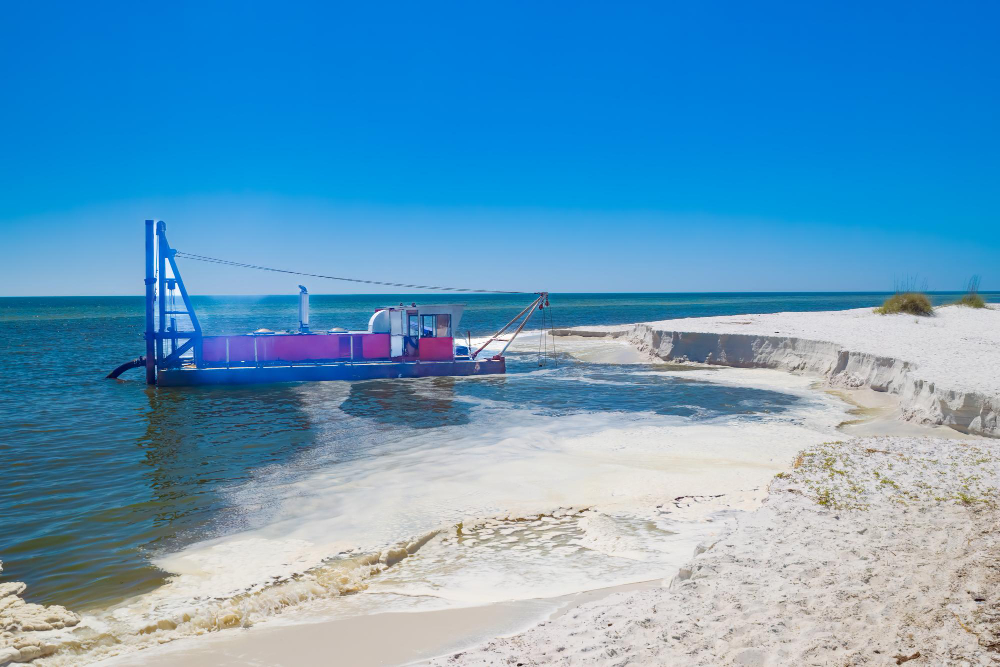In the ever-evolving realm of dredging, the 21st century presents a dynamic landscape filled with challenges and innovations. As we navigate deeper waters and witness a surge in environmental consciousness, the role of dredging pipes becomes paramount. Deeper dredging projects are on the rise, driven by the demand to accommodate larger vessels and enhance navigational efficiency. In this changing world, where the need to balance development and environmental responsibility is paramount, dredging pipes, particularly those designed for environmental dredging, are at the forefront of ensuring a sustainable future.
The Growing Need For Deeper Dredging
In recent years, the landscape of dredging has witnessed a significant shift, with an increased focus on deeper dredging projects. Various factors, including the need to accommodate larger ships and the deepening of waterways to improve navigational efficiency, drive this escalation. As shipping routes become busier and cargo ships grow in size, the demand for deeper channels is unceasing. In this process, dredging pipes play a pivotal role, ensuring efficient and effective movement of materials from the dredged areas.

Deeper dredging presents unique challenges. It requires advanced technology and equipment capable of reaching greater depths while maintaining operational efficiency. The use of high-quality dredging pipes becomes crucial, as they must withstand the increased pressure and abrasion encountered at these depths. Moreover, deeper dredging often intersects with sensitive ecological zones, necessitating a delicate balance between developmental needs and environmental conservation.
The Emergence Of Environmental Dredging With Dredging Pipes
Environmental dredging is a rising trend, reflecting a global shift towards more ecologically responsible practices. This method focuses on removing contaminated sediments in a manner that minimizes the environmental impact. The precision and care required for environmental dredging highlight the need for specialized dredging pipes capable of handling contaminated materials safely and efficiently.
This trend underscores the changing role of dredging from purely industrial applications to becoming a tool for environmental restoration. These projects often design dredging pipes to reduce turbidity and prevent the spread of contaminants, safeguarding aquatic ecosystems. As environmental regulations become stricter, the demand for environmental dredging and the use of appropriate dredging pipes will likely continue to increase.
The Importance Of Training And Certification
Evolving 21st-century dredging highlights a critical need for enhanced field training, education, and certification. It’s about grasping modern dredging projects’ environmental, regulatory and technical nuances, not just operating machinery or handling dredging pipes.
In response, the dredging industry has pushed for comprehensive training programs and certifications for involved professionals. These programs equip professionals with in-depth knowledge of dredging, including pipe selection, environmental compliance, safety, and project management. Emphasizing education ensures that dredging evolves responsibly to meet the world’s changing needs effectively.
The Advent Of Smart Dredging
The advent of smart technology has revolutionized many industries, and dredging is no exception. Smart dredging represents a significant leap forward, integrating advanced technologies such as GPS, IoT (Internet of Things), and AI (Artificial Intelligence) to enhance efficiency and precision. This integration has led to the development of smarter dredging pipes that are equipped with sensors and monitoring systems to provide real-time data on various aspects like flow rate, pressure, and sediment composition.
These technological advancements enable operators to make informed decisions, optimize dredging operations, and minimize environmental impact. Smart dredging pipes, for example, can adjust to different sediment types and conditions, ensuring that the dredging process is as efficient and environmentally friendly as possible. Furthermore, operators can use the collected data for predictive maintenance, reducing downtime and prolonging the equipment’s lifespan. In the 21st century, smart technology in dredging promises unparalleled efficiency and environmental responsibility.
Dredging’s Role In Coastal Restoration
Dredging is crucial for coastal restoration amid growing climate change and rising sea levels threatening coastal areas. Coastal restoration projects often involve the use of dredging pipes to relocate sand and other materials to eroded beaches or create new landforms like dunes and barrier islands. It safeguards coastlines, restores wildlife habitats, and fortifies coastal communities against storms and flooding.
The strategic use of dredging in coastal restoration requires a careful balance between development needs and ecological preservation. Dredging pipes used in these projects must be capable of handling large volumes of materials while ensuring minimal disruption to marine life and habitats. As coastal challenges grow, so does the importance of dredging in providing solutions. Integrating advanced techniques and environmental understanding, the dredging industry shapes sustainable coastlines for future generations.
Discover The Difference – Embrace Excellence
Ready to dive deeper into the world of 21st-century dredging? Join us at Bigfoot Pipe And Piling, where innovation meets efficiency. Our top-of-the-line dredging pipes are engineered to meet the unique challenges of modern dredging projects, ensuring unmatched performance and environmental responsibility.
With a wealth of experience and expertise, we’re your trusted partner in navigating the evolving landscape of dredging trends and challenges. Explore the intricacies of deeper dredging, environmental dredging, and the importance of high-quality dredging pipes in shaping a sustainable future. Discover how we can be your key to success in this ever-changing industry.
